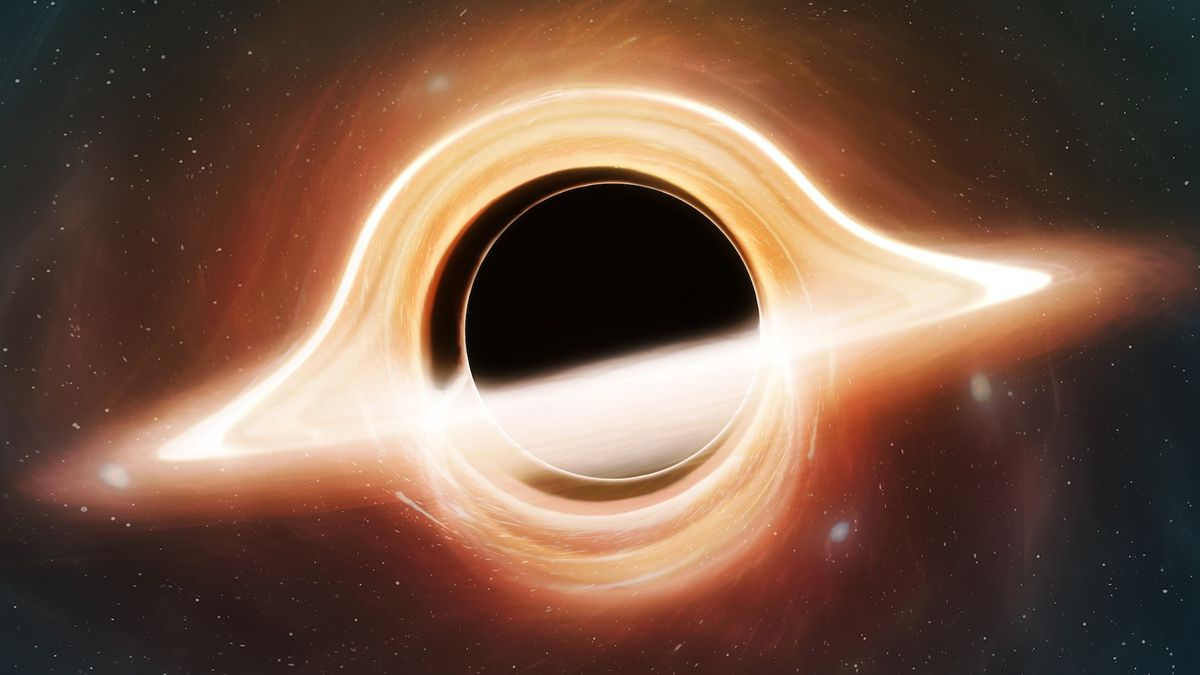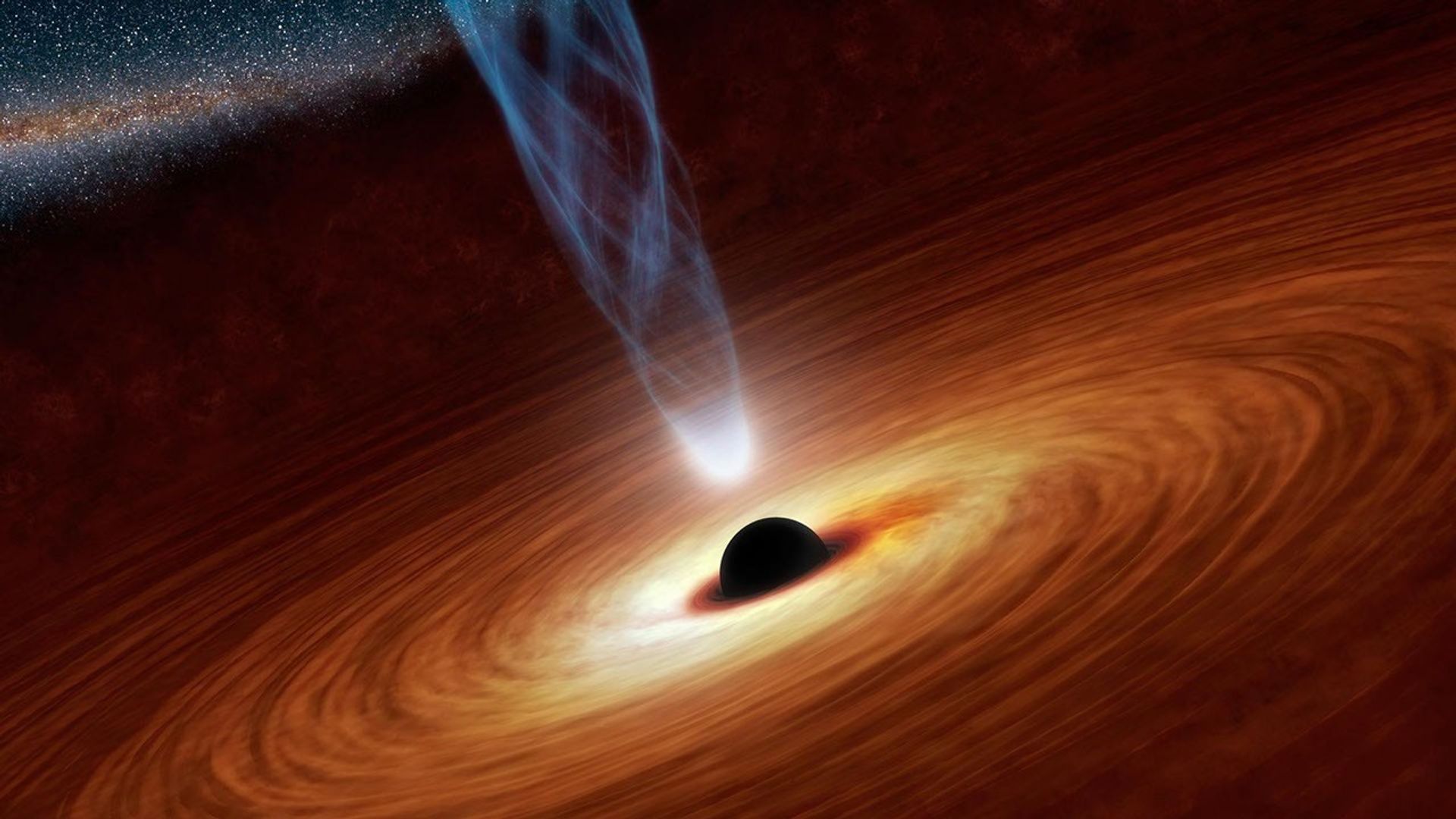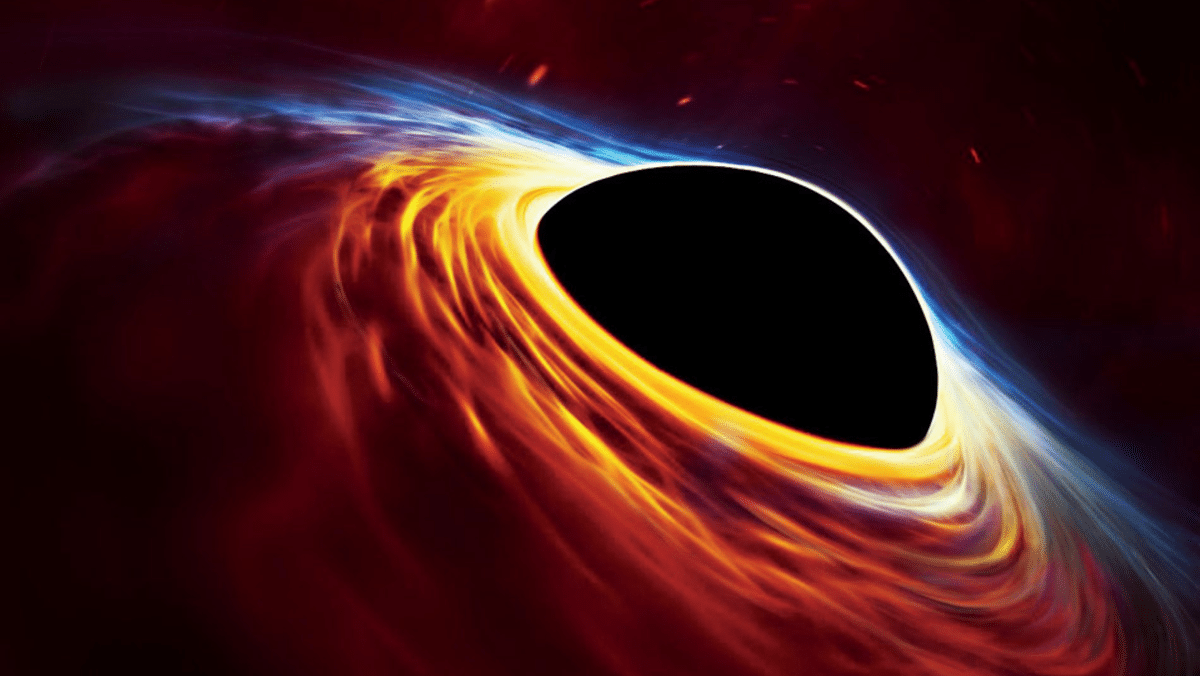Anúncios
Unraveling the mysteries of the cosmic entities that have been puzzling astrophysicists for decades – Black Holes. These celestial marvels, remnants of collapsed stars, have held our curiosity captive with their enigmatic nature and impenetrable secrets. In this exploration, we journey into the unknown, venturing beyond the event horizon to probe the profound enigmas of these galactic beasts.
Peeling back the layers of this cosmic riddle is no easy task. However, with the advent of groundbreaking technology and revolutionary theories, our understanding of black holes is progressing at a brisk pace. This expedition will take you through the latest discoveries and cutting-edge research that is challenging and reshaping our understanding of the cosmos.
Anúncios
As we delve into the abyss of the unknown, prepare to traverse the edge of reality and comprehension. From their inception, to their curious characteristics, and the paradoxes they present – this odyssey is not for the faint-hearted. Strap in, as we embark on this astronomical adventure to unravel the mysteries of black holes – a deep dive into the unknown.
Understanding Black Holes
Black holes are perhaps the most enigmatic and elusive objects in the universe. They have long captivated the imaginations of scientists and the general public alike, not only for their mysterious nature but also for their ability to challenge the very foundations of physics. At their core, black holes are regions of spacetime where gravity has become so intense that nothing, not even light, can escape. This incredible gravitational force results from matter being compressed into an extraordinarily small volume, creating what is known as a singularity.
Anúncios
The concept of a black hole was first theorized in the early 20th century, shortly after Albert Einstein published his theory of general relativity. However, it was not until later in the century that observational evidence began to support their existence. Today, black holes are recognized as a fundamental aspect of astrophysics, with evidence gathered from X-ray emissions, gravitational lensing, and even direct imaging. In 2019, the Event Horizon Telescope captured the first image of a black hole’s shadow, marking a groundbreaking moment in scientific history.

Despite their name, black holes are not empty voids. They contain a vast amount of mass compressed into an incredibly small space, resulting in a gravitational pull that distorts space and time itself. This distortion can be so extreme that time near a black hole moves more slowly compared to regions farther away. The boundary surrounding a black hole, known as the event horizon, marks the point of no return. Once an object crosses this threshold, it is inevitably pulled inward, unable to escape.
Understanding black holes is not just a theoretical pursuit. These cosmic phenomena offer a unique window into the workings of the universe, helping scientists test the limits of physical laws and deepening our comprehension of gravity, space, and time.
Formation and Basic Structure
Black holes are primarily formed from the gravitational collapse of massive stars at the end of their life cycles. When a star has exhausted its nuclear fuel, it loses the ability to counteract the inward pull of gravity with the outward pressure produced by nuclear fusion. In less massive stars, this process leads to the formation of white dwarfs or neutron stars. However, in the case of particularly massive stars—those with a mass greater than roughly three times that of our Sun—the collapse continues past the neutron star stage, ultimately resulting in the creation of a black hole.
This dramatic end is typically preceded by a supernova, one of the most energetic events in the universe. A supernova occurs when the core of the star collapses, releasing an immense amount of energy and ejecting the outer layers into space. What remains after the explosion is a compact core, which, if sufficiently dense and massive, becomes a black hole. The gravitational field of this remnant is so strong that it deforms spacetime and creates a region from which no information or matter can return.
The defining feature of a black hole is its event horizon. This is not a physical surface, but rather a theoretical boundary that marks the point of no return. Once anything—matter, light, or even radiation—passes this boundary, it is irrevocably pulled into the black hole. The event horizon is crucial in defining the size of the black hole and is directly related to its mass. The larger the mass of the black hole, the larger the radius of the event horizon, known as the Schwarzschild radius in the case of non-rotating black holes.
Despite their reputation as invisible voids, black holes possess a complex internal structure that continues to baffle scientists. At the center of every black hole lies what is known as the singularity. This is a region where matter is thought to be compressed to an infinitely small point, resulting in infinite density and curvature of spacetime. The laws of physics as we currently understand them, including general relativity and quantum mechanics, break down in this extreme environment. The singularity represents one of the greatest theoretical challenges in modern physics, as it indicates the need for a unified theory that combines gravity and quantum mechanics.
Surrounding the event horizon, but still outside of it, lies what is referred to as the black hole’s ergosphere in the case of rotating black holes. In this region, spacetime itself is dragged around by the immense rotational energy of the black hole, a phenomenon known as frame dragging. Objects in the ergosphere can theoretically escape if given the right momentum, unlike those that have crossed the event horizon.
Black holes can also vary widely in size and mass. Stellar-mass black holes are the most common and are typically several times the mass of the Sun. At the opposite extreme lie supermassive black holes, which are found at the centers of galaxies and can have masses ranging from millions to billions of times that of the Sun. How these enormous black holes form remains one of the most intriguing open questions in astrophysics. There are also intermediate-mass black holes, whose existence is still being confirmed, and hypothetical primordial black holes that may have formed in the early universe.
In essence, black holes are not merely exotic byproducts of stellar death. They are fundamental to the structure and evolution of the universe itself. Understanding how they form and what they contain not only deepens our comprehension of the cosmos, but also brings us closer to unraveling some of the most profound mysteries in physics.
The Intriguing Properties of Black Holes
Despite their infamous reputation for devouring matter, black holes exhibit a plethora of intriguing properties that transcend the realms of ordinary physics and venture into the domain of the abstract and mysterious.

Gravitational Singularity
The gravitational singularity is believed to reside at the very core of a black hole, hidden deep within the event horizon. It is a region where matter has been compressed to an unimaginable degree, resulting in infinite density and zero volume. At this point, the known laws of physics cease to function in any meaningful way. Space and time, as we understand them, collapse into a state where our current scientific models are no longer capable of making accurate predictions.
This concept is one of the most perplexing and fascinating aspects of black holes. While general relativity predicts the existence of singularities, it also breaks down under such extreme conditions, suggesting the need for a more complete theory that unifies gravity with quantum mechanics. Within the singularity, gravitational forces become infinitely strong, and all matter is crushed into an infinitely small point.
Because the singularity is concealed behind the event horizon, it remains inaccessible to observation. No signal, light, or information can escape from it, making it impossible to study directly. Its existence continues to raise profound questions about the nature of space, time, and the ultimate fate of matter. The singularity stands as one of the greatest mysteries at the intersection of cosmology and theoretical physics.
Hawking Radiation
Contrary to popular belief, black holes aren’t entirely black. Thanks to a process described by the renowned physicist Stephen Hawking, black holes can emit radiation, known as Hawking Radiation. This process results from quantum effects near the event horizon, leading to the creation of particle-antiparticle pairs. One falls into the black hole while the other escapes, effectively making the black hole lose mass over time—a phenomenon referred to as black hole evaporation.
Black Holes and General Relativity
Albert Einstein’s theory of general relativity plays a pivotal role in our understanding of black holes. His ground-breaking theory reshaped the way we perceive gravity and spacetime and predicted the existence of black holes.
Spacetime Curvature
In Einstein’s model, massive objects, such as black holes, warp spacetime around them—much like a bowling ball on a trampoline. This curvature of spacetime dictates the motion of objects around the black hole, often resulting in highly elliptical orbits or spiraling infall into the black hole.
Gravitational Waves
Another remarkable prediction of Einstein’s theory was the existence of gravitational waves—ripples in spacetime caused by the acceleration of massive objects. The discovery of these waves by the LIGO-Virgo collaboration in 2016, resulting from the collision of two black holes, was a significant milestone in astrophysics and a testament to the power of general relativity.
The Mysteries Yet to Unravel
While we’ve made significant strides in understanding black holes, they continue to pose many questions and present tantalizing mysteries.
Information Paradox
One of the greatest unsolved problems in theoretical physics is the black hole information paradox. According to quantum mechanics, information can never be lost. However, if a black hole evaporates completely through Hawking Radiation, what happens to the information about the material that fell into it? This apparent contradiction between quantum mechanics and general relativity remains unresolved.
Existence of Wormholes
Wormholes, or hypothetical shortcuts through spacetime, have often been associated with black holes. While they are solutions to Einstein’s field equations, their existence in reality is still a topic of debate.
- Can they exist naturally, or can they only be artificially created?
- Are they stable enough to allow travel, or would they collapse instantly?
Quantum Gravity
Lastly, the singularity at the center of a black hole is a domain where both quantum mechanics and general relativity must be applied simultaneously, necessitating a theory of quantum gravity—a pursuit that remains elusive to scientists.
.jpg)
Despite these unresolved mysteries, the study of black holes continues to provide profound insights into the nature of the universe, stretching our understanding of physics to its limits, and, in many ways, reshaping it. The quest to unravel the secrets of these celestial giants is a testament to human curiosity and our relentless pursuit of knowledge.
Conclusion
In conclusion, the captivating enigma of black holes continues to draw the curiosity of scientists worldwide, keeping us firmly immersed in an intense quest for knowledge. Despite being enveloped in darkness, black holes shed light on the profound depths of the universe, significantly enriching our understanding of space and time. Though shrouded in mystery, with each scientific breakthrough we edge closer to decoding the secrets of these celestial phenomena.
The exploration of black holes not only enhances our comprehension of the cosmos but also challenges us to push the boundaries of human thought and innovation. This deep dive into the unknown prompts us to question the very nature of our reality, invoking a sense of awe and wonder.
Overall, the quest to unravel the mysteries of black holes is a testament to the relentless human spirit of discovery. It symbolizes our innate drive to understand our universe and our place within it. As we continue to gaze into the depths of the cosmos, we also peer into the depths of our own potential.
In the grand cosmic theater, black holes may be enigmatic and elusive, but they are undoubtedly compelling narrators of the universe’s story. Their tale is far from over, and we are but eager listeners, awaiting the next chapter in this cosmic saga.

